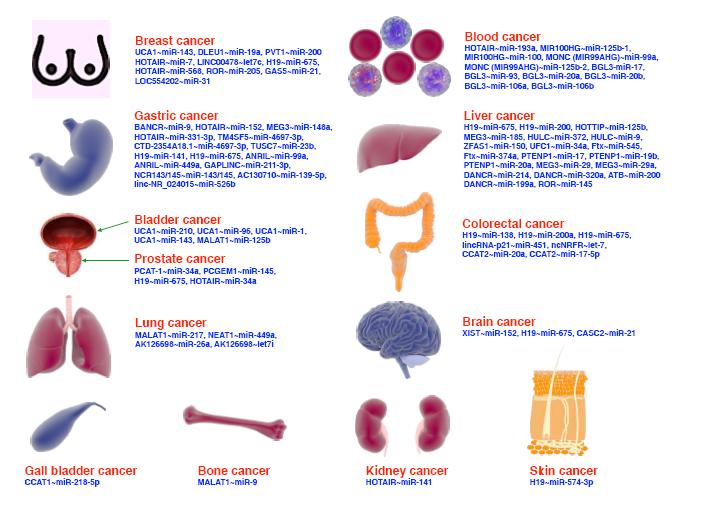| 1. |
Logsdon GA, Vollger MR, Eichler EE. Long-read human genome sequencing and its applications. Nat Rev Genet, 2020, 21(10): 597-614.
|
| 2. |
Xiao T, Zhou W. The third generation sequencing: the advanced approach to genetic diseases. Transl Pediatr, 2020, 9(2): 163-173.
|
| 3. |
Ling X, Wang C, Li L, et al. Third-generation sequencing for genetic disease. Clin Chim Acta, 2023, 551: 117624.
|
| 4. |
Eid J, Fehr A, Gray J, et al. Real-time DNA sequencing from single polymerase molecules. Science, 2009, 323(5910): 133-138.
|
| 5. |
Clarke J, Wu HC, Jayasinghe L, et al. Continuous base identification for single-molecule nanopore DNA sequencing. Nat Nanotechnol, 2009, 4(4): 265-270.
|
| 6. |
Flowers NJ, Burgess T, Giouzeppos O, et al. Genome-wide noninvasive prenatal screening for carriers of balanced reciprocal translocations. Genet Med, 2020, 22(12): 1944-1955.
|
| 7. |
Dong Z, Wang H, Chen H, et al. Identification of balanced chromosomal rearrangements previously unknown among participants in the 1000 genomes project: implications for interpretation of structural variation in genomes and the future of clinical cytogenetics. Genet Med, 2018, 20(7): 697-707.
|
| 8. |
Alfarawati S, Fragouli E, Colls P, et al. First births after preimplantation genetic diagnosis of structural chromosome abnormalities using comparative genomic hybridization and microarray analysis. Hum Reprod, 2011, 26(6): 1560-1574.
|
| 9. |
Madan K. Balanced complex chromosome rearrangements: reproductive aspects. A review. Am J Med Genet A, 2012, 158A(4): 947-963.
|
| 10. |
Pellestor F, Anahory T, Lefort G, et al. Complex chromosomal rearrangements: origin and meiotic behavior. Hum Reprod Update, 2011, 17(4): 476-494.
|
| 11. |
Chau MHK, Li Y, Dai P, et al. Investigation of the genetic etiology in male infertility with apparently balanced chromosomal structural rearrangements by genome sequencing. Asian J Androl, 2022, 24(3): 248-254.
|
| 12. |
Zhang S, Pei Z, Lei C, et al. Detection of cryptic balanced chromosomal rearrangements using high-resolution optical genome mapping. J Med Genet, 2023, 60(3): 274-284.
|
| 13. |
Madjunkova S, Sundaravadanam Y, Antes R, et al. Detection of structural rearrangements in embryos. N Engl J Med, 2020, 382(25): 2472-2474.
|
| 14. |
Zeng X, Lin D, Liang D, et al. Gene sequencing and result analysis of balanced translocation carriers by third-generation gene sequencing technology. Sci Rep, 2023, 13(1): 7004.
|
| 15. |
Goodwin S, McPherson JD, McCombie WR. Coming of age: ten years of next-generation sequencing technologies. Nat Rev Genet, 2016, 17(6): 333-351.
|
| 16. |
Hassan S, Bahar R, Johan MF, et al. Next-generation sequencing (NGS) and third- generation sequencing (TGS) for the diagnosis of thalassemia. Diagnostics (Basel), 2023, 13(3): 373.
|
| 17. |
Liang Q, Gu W, Chen P, et al. A more universal approach to comprehensive analysis of thalassemia alleles (CATSA). J Mol Diagn, 2021, 23(9): 1195-1204.
|
| 18. |
Liang Q, He J, Li Q, et al. Evaluating the clinical utility of a long-read sequencing- based approach in prenatal diagnosis of thalassemia. Clin Chem, 2023, 69(3): 239-250.
|
| 19. |
Peng C, Zhang H, Ren J, et al. Analysis of rare thalassemia genetic variants based on third-generation sequencing. Sci Rep, 2022, 12(1): 9907.
|
| 20. |
Zhang Q, Fan X, Xu M, et al. Hb H disease caused by multiple mutations in the polyadenylation signal site and - -SEA/αα. Hemoglobin, 2017, 41(3): 189-192.
|
| 21. |
Charoenwijitkul T, Singha K, Fucharoen G, et al. Molecular characteristics of α+-thalassemia (3.7 kb deletion) in Southeast Asia: molecular subtypes, haplotypic heterogeneity, multiple founder effects and laboratory diagnostics. Clin Biochem, 2019, 71: 31-37.
|
| 22. |
中华医学会医学遗传学分会遗传病临床实践指南撰写组. α-地中海贫血的临床实践指南. 中华医学遗传学杂志, 2020, 37(3): 235-242.
|
| 23. |
Liu Y, Chen M, Liu J, et al. Comprehensive analysis of congenital adrenal hyperplasia using long-read sequencing. Clin Chem, 2022, 68(7): 927-939.
|
| 24. |
Liu Y, Li D, Yu D, et al. Comprehensive analysis of hemophilia A (CAHEA): towards full characterization of the F8 gene variants by long-read sequencing. Thromb Haemost, 2023, 123(12): 1151-1164.
|
| 25. |
Liang Q, Liu Y, Liu Y, et al. Comprehensive analysis of fragile X syndrome: full characterization of the FMR1 locus by long-read sequencing. Clin Chem, 2022, 68(12): 1529-1540.
|
| 26. |
Yao F, Hao N, Li D, et al. Long-read sequencing enables comprehensive molecular genetic diagnosis of fabry disease. Hum Genomics, 2024, 18(1): 133.
|
| 27. |
Tsuiko O, El Ayeb Y, Jatsenko T, et al. Preclinical workup using long-read amplicon sequencing provides families with de novo pathogenic variants access to universal preimplantation genetic testing. Hum Reprod, 2023, 38(3): 511-519.
|
| 28. |
Capuano I, Buonanno P, Riccio E, et al. Therapeutic advances in ADPKD: the future awaits. J Nephrol, 2022, 35(2): 397-415.
|
| 29. |
Reiterová J, Tesař V. Autosomal dominant polycystic kidney disease: from pathophysiology of cystogenesis to advances in the treatment. Int J Mol Sci, 2022, 23(6): 3317.
|
| 30. |
Peng C, Chen H, Ren J, et al. A long-read sequencing and SNP haplotype-based novel preimplantation genetic testing method for female ADPKD patient with de novo PKD1 mutation. BMC Genomics, 2023, 24(1): 521.
|
| 31. |
Mariya T, Shichiri Y, Sugimoto T, et al. Clinical application of long-read nanopore sequencing in a preimplantation genetic testing pre-clinical workup to identify the junction for complex Xq chromosome rearrangement-related disease. Prenat Diagn, 2023, 43(3): 304-313.
|
| 32. |
Pei Z, Deng K, Lei C, et al. Identifying balanced chromosomal translocations in human embryos by Oxford nanopore sequencing and breakpoints region analysis. Front Genet, 2022, 12: 810900.
|




